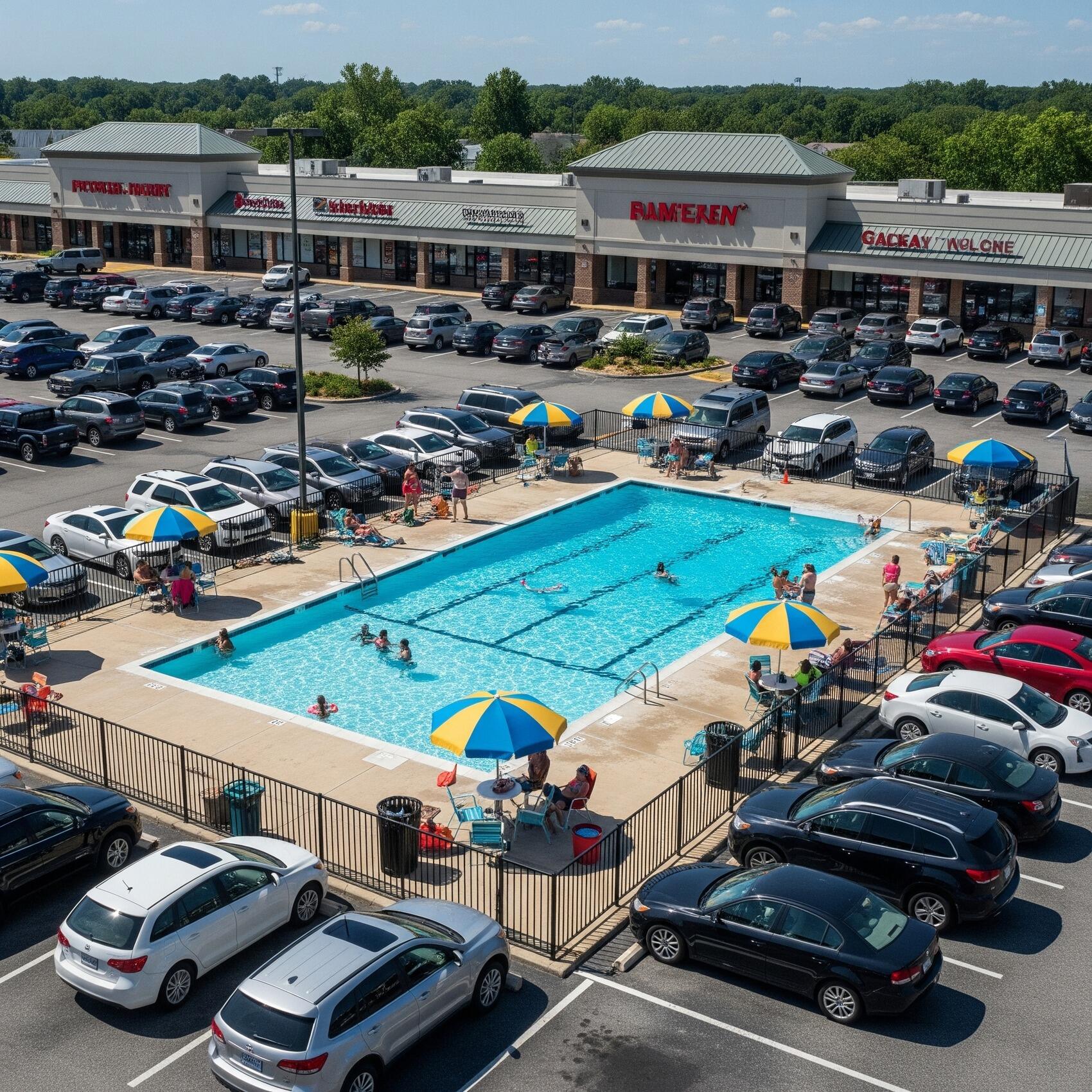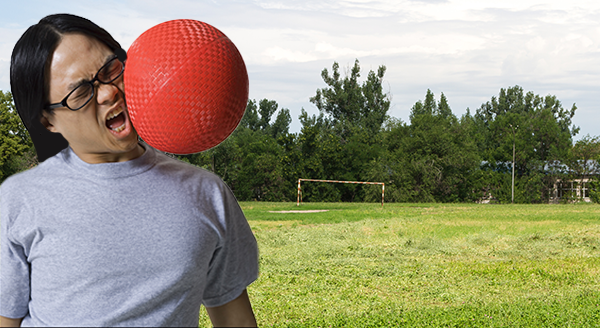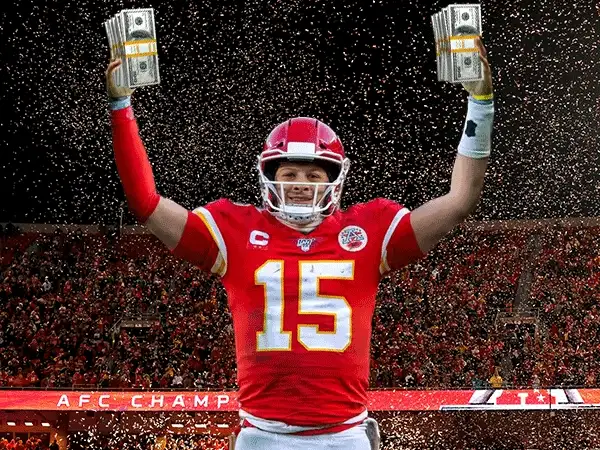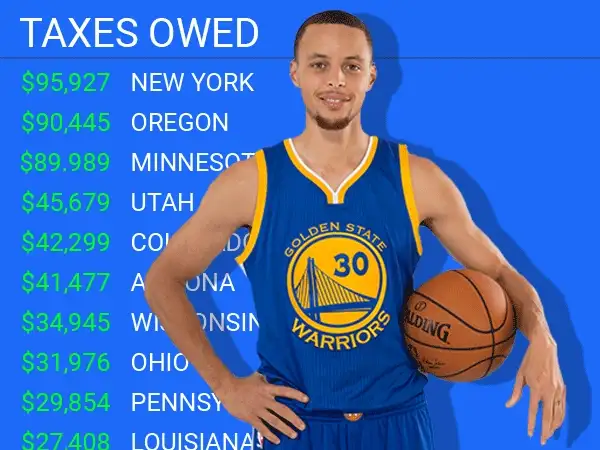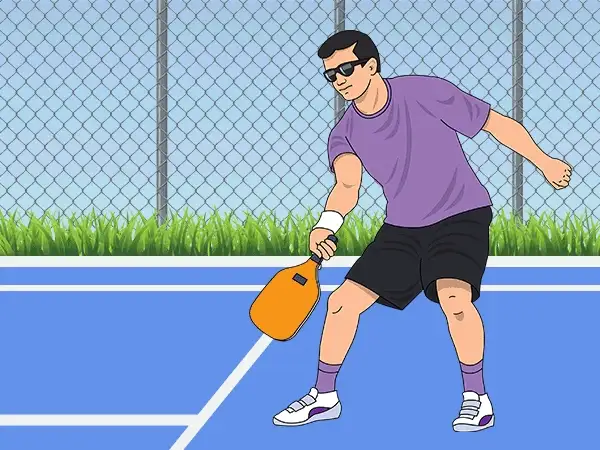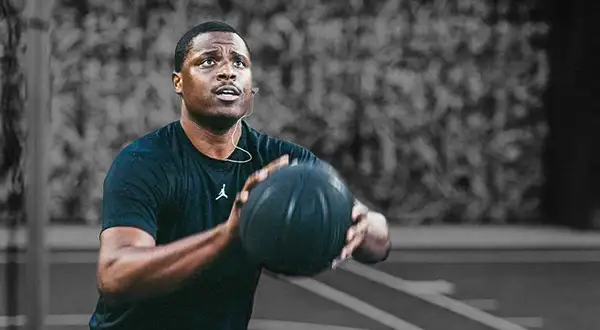The Olympic decathlon crowns the ‘world’s greatest athlete.’ But you’d never know it from the salaries.
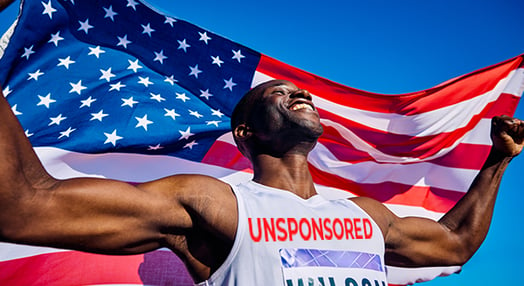
Zach Ziemek collapsed when he made the US Olympic team last month. He lay on the track in his black singlet, glazed in sweat, staring up at the Eugene, Oregon sky.
He was exhausted from having just finished running the 1500 meters, the last of the 10 segments of his two-day decathlon event, and elated to know he’d get to compete for a gold medal and title of “world’s greatest athlete” at the Paris Games.
That title, Ziemek says, was “one of the main reasons why I got into the decathlon.” His passion for mastering its various grueling disciplines has kept him going: through a career that’s included two previous Olympic berths and a bronze medal at the 2022 World Championships. He’s still reeling off personal bests at age 31.
“I was just like, ‘Wow, who would have thought that he'd be hitting his peak this late?’” says Ziemek’s coach, Nate Davis, recounting how he felt watching Ziemek at last month’s Olympic Trials. “It was confirmation of what a long term investment in a guy is.”
Surprisingly, however, about the only people who’d invested in Ziemek were Davis, Ziemek’s family, the USA Track & Field federation, and the athletic department at his alma mater, the University of Wisconsin-Madison. At the Trials, Ziemek ran “unattached.” He didn’t have a sponsor and hasn’t had one for a few years.
Zach Ziemek stretches out at the end of the 400 meter run as part of the Olympic Trials decathlon. (Patrick Smith/Getty Images)
Olympians have always had a tortured relationship with money. Decades ago, athletes were barred from receiving any compensation at all. Today, many Olympians still work full-time jobs outside their sport while Olympic committees spend billions to host the games and reward executives with high six-figure salaries.
But male decathletes, along with female heptathletes, stand out for their lightly-rewarded toil.
An historic, once-cherished event that had the financial backing of VISA a generation ago, the decathlon now has fewer sponsorship opportunities and primetime TV coverage than most other track and field events. Decathletes vying for the title of world’s greatest athlete must stave off physical and mental exhaustion to master sprints, hurdles, long distance running, throws, and jumps while balancing one of the trickiest skills of all: trying to hang on financially.
A Golden VISA era
In the 1970s, Fred Samara, Harry Marra, and many of the country’s best decathletes — along with Jane Frederick, a record-setting heptathlete — trained in Santa Barbara, California. Some were on food stamps and lived in free student housing available only because enrollment at the University of California Santa Barbara had cratered and 1968 gold medalist Bill Toomey had arranged the living situation.
“I was doing part-time substitute teaching, whatever we had to do to make ends meet,” says Marra, a former decathlete and one of the event’s most decorated coaches.
The athletes’ pauper lifestyles didn’t fit the pageantry of the event. The decathlon grew out of the Ancient Greek Olympics’ pentathlon, a favorite event of Aristotle (“Athletes in the pentathlon are most beautiful,” he wrote). It gained legendary status in modern times at the 1912 Stockholm Olympics when Jim Thorpe dominated the decathlon so thoroughly that Swedish King Gustaf V greeted him from his royal box and reportedly said, “You, sir, are the most wonderful athlete in the world.”
Jim Thorpe at a track meet in France in 1912. (Branger/Roger Viollet via Getty Images)
Decathlon champions have vied for the title of world’s greatest athlete ever since, with Americans like Toomey and Rafer Johnson earning the title. (Later, so would Jackie Joyner-Kersee, who won two of the first three Olympic heptathlons, the women’s Olympic version of the event, in 1988 and 1992.)
Tired of being in dire financial straits, Marra and Samara vowed over a New Year’s Eve toast in 1971 to spend their post-competition careers making life less financially stressful for decathletes. They thought Caitlyn Jenner’s decathlon triumph at the 1976 Games would lead to a windfall for decathletes, but the attention Jenner brought to the event was short-lived. In the ‘80s, when Marra and Samara directed decathletes for USATF, Marra says their budget was a measly $3.6k per year.
One day, after a recommendation from Toomey, Marra reached out to VISA executive John Bennett. Bennett believed it was imperative for the US to succeed at the decathlon, given the event’s history and that it crowned the world’s greatest athlete. In 1990, VISA hosted a decathlon camp in San Francisco, putting up more than a dozen current and former decathletes at a brand new luxury hotel — spending more that weekend than the USATF had spent on the decathlon in the prior decade.
For the next several years, the credit card company paid out living stipends to the top 10 US decathletes, covered travel and health expenses, and offered bonuses for achievements at meets.
The amount was a rounding error for VISA, but it brought attention and class to the decathlon when it had previously “been a poor man’s no-love event,” says Sheldon Blockburger, a decathlete who was on the VISA team.
The Hustle
The largesse coincided with a decathlon golden era: a world record by Dan O’Brien, Olympic medals by O’Brien and Dave Johnson (who were featured as Dan and Dave in a famous Super Bowl ad campaign), three world championships medals, and opportunities for lower-ranked decathletes who would’ve otherwise had no financial backing to continue training and improving.
“My career might’ve ended in ‘92 and might’ve ended in ‘96 for sure without those few dollars [VISA was] giving to us,” says Kip Janvrin, who qualified for the 2000 Olympics.
Bennett, Marra says, was the “godfather of the decathlon.”
But Bennett retired from VISA in the late ‘90s, and the VISA team basically ended when his career did. According to Marra and Blockburger, it didn’t help that the USATF wanted sponsors to support all track and field events rather than focus on the decathlon or another single event.
The US decathletes kept thriving at the Olympics, though. Ashton Eaton, coached by Marra, won the gold medal in 2012 and 2016. But rather than create a frenzy of publicity, Eaton’s 2016 victory was overshadowed — Marra recalls that the next event on the track after Eaton clinched gold featured famous sprinter Usain Bolt.
‘Everybody is sort of left to their own devices’
Ziemek thought he’d have a sponsor by now. His stock has been trending upward for the last three years.
In 2021, he finished sixth at the Olympics, not far from a medal. The next year, he took bronze at the World Championships, the most important competition in a non-Olympic year.
He’d had a multiyear Adidas deal at the outset of his professional career — after making the Olympics for the first time in 2016 — and believed the bronze medal would lead to another contract with Adidas or Nike, “somebody that would be interested in me,” Ziemek says.
“And that did not happen.”
So he’s sustained his career with a piecemeal financial approach: living off savings and investments earned from the since-expired contract with Adidas, occasional grants from USATF, and support from his wife, a former track athlete who works full time.
The University of Wisconsin also allows Ziemek to use its track and field training facilities. Davis, who has a salaried coaching position at Wisconsin, coaches him for free. “We’re not concerned about the money,” Davis says. “It’s like the perfect confluence of two people that are exactly the same.”
And such a circumstance, though hardly what you’d imagine for one of the best athletes in the world at his event, is often as good as it gets.
The Hustle
While well-known Olympians like Katie Ledecky and Sha'Carri Richardson earn millions through endorsements, there’s less support for the athletic middle class — unheralded newcomers starting out their professional careers after college and veterans who haven’t medaled and are aiming to improve for an Olympic berth.
In fact:
- About half of all Olympic and Paralympic hopefuls have never received any compensation related to their sport, according to a Commission on the State of US Olympics & Paralympics survey of 648 elite athletes.
- 26.5% of the surveyed athletes had a total income of less than $15k per year, and another study from the US Olympic and Paralympic Committee found 59% of Olympic hopefuls make less than $25k during Olympic years.
To provide baseline financial support for Olympic hopefuls, most big countries have public funding mechanisms. The US doesn’t, although organizations like the USATF and US Olympic & Paralympic Committee, which makes billions from sponsors and TV rights every Olympics cycle, award grants in the $10k-$40k range to hundreds of athletes every year.
Helpful as those grants have been, the athletes who receive them tend to be established, having either won a major Division I college championship or already qualified for the Olympics.
“Because the system, at least here in the US, has never fully reconciled with the whole shift from being amateur to being professional, the infrastructure isn’t quite there to support everybody,” says Han Xiao, a former Olympic alternate for the US men’s table tennis team and co-chair of the Commission on the State of US Olympics & Paralympics. “Everybody is sort of left to their own devices to either find sponsorships or get a job.”
Only ~11.5% of Olympic-level athletes have received sponsorships, according to the report by the Commission on the State of US Olympics & Paralympics. Those deals can range from anywhere in the lower five figures to $100k+ per year, and sponsor interest varies greatly by sport and event: Nearly all of the top nine finishers in sprinting and middle distance track events at this year’s Olympic Trials had shoe or apparel deals, while fewer than half did in the decathlon and heptathlon.
The Hustle
Decathletes and heptathletes often compete just three times per year, given the grueling nature of the event. The lack of competitions — and difficulty of televising an event that lasts two days — leaves fewer opportunities for brands to be associated with decathletes, making them less appealing.
“I learned no one will support you,” says Jack Flood, who finished fifth in the decathlon at June’s US Olympic Trials, narrowly missing the Olympic team.
He reached out to numerous agents, seeking a shoe sponsor after achieving a milestone decathlon score, above 8,000 points, at the 2021 Trials. Unable to attract interest, Flood went the entrepreneurial route, posting on TikTok three times a day for the next several months.
He’s now a fitness influencer with 200k+ followers and has had deals with Raising Cane’s and Panda Express and a longterm sponsorship from the supplement maker Choq.
“If social media never worked, I don’t know what I'd be doing,” Flood says.
Similarly, heptathlete Chari Hawkins, who qualified for the Olympics, has built a following of nearly 1m Instagram followers by sharing training advice for recreational runners. But social media is competitive and can be as time-consuming as more traditional work (Flood says the time he spent making and editing videos took away from his training in 2022; Ziemek avoids social media.)
Clockwise from left: Chari Hawkins, Denim Rogers, Jack Flood. (Patrick Smith/Getty Images and Christian Petersen/Getty Images)
Denim Rogers, who competed at the Olympic Trials, works as a private coach for about eight hours each day, on top of the six hours he spends training. He just returned to the US last week after traveling to Frankfurt to represent the US in the Thorpe Cup. Rogers finished in second place with 8,074 points, his best decathlon score yet.
The experience, despite a 33-hour flight with three connections paid for out of his own pocket, left him more inspired to pursue the next Olympics, “as long as funds are available and I’m still having fun,” says Rogers, who is 26.
Some of his fellow US decathletes at the German meet, however, didn’t think they’d have enough financial resources to compete much longer.
“Two of them,” Rogers says, “were just like, ‘We’re going to be done.’”
A new age of uncertainty
What would it take to revive a storied event with roots connected to Aristotle, Jim Thorpe, and Jackie Joyner-Kersee?
In many ways, support for the decathlon and heptathlon is not trending in the right direction.
- Olympic sports have entered a new era of uncertainty after the recent legal decision in House v. NCAA, which may affect the collegiate talent pipeline that most US Olympians come from.
- Track events like the decathlon and heptathlon could be especially harmed, says Davis, Ziemek’s coach, because university athletic departments will be more incentivized to spend their scarce resources on athletes who score in multiple events, rather than exhaust themselves in a single event.
Meanwhile, the Olympics as a whole suffered their worst ratings in decades in 2021, and one agent told Reuters the cycle leading up to Paris had been “worse than ever” for athletes seeking sponsorships.
Marra wanted the Paris organizers to highlight the decathlon and heptathlon. A few months ago, he wrote to Sebastian Coe, a friend and high-ranking Olympic official, to suggest that the events be featured as the center of the Games, believing they exemplify the spirit of the Olympics with their focus not on triumph but struggle. He didn’t hear back.
But Marra still hopes a captivating performance in Paris could bring new inspiration and attention to the events.
Anna Hall celebrates after finishing her last event of the Olympic Trials heptathlon. (Patrick Smith/Getty Images)
Heath Baldwin, a Michigan State University decathlete who finished first at the Olympic Trials, just ahead of Ziemek, will make his Olympic debut. So will Anna Hall, a 23-year-old heptathlete with an Adidas deal, a burgeoning social media following, and a compelling comeback story after having sustained an injury at the 2021 Olympic Trials.
“It’s just been a lot of adversity and a lot of doubt,” Hall said after clinching her Olympic berth last month. “So it’s just relief, like, ‘I am meant to do this.’”
It’s a feeling to which many decathletes and heptathletes can relate. The question for most, however, is how long they can afford to do it.
Sports And Esports


